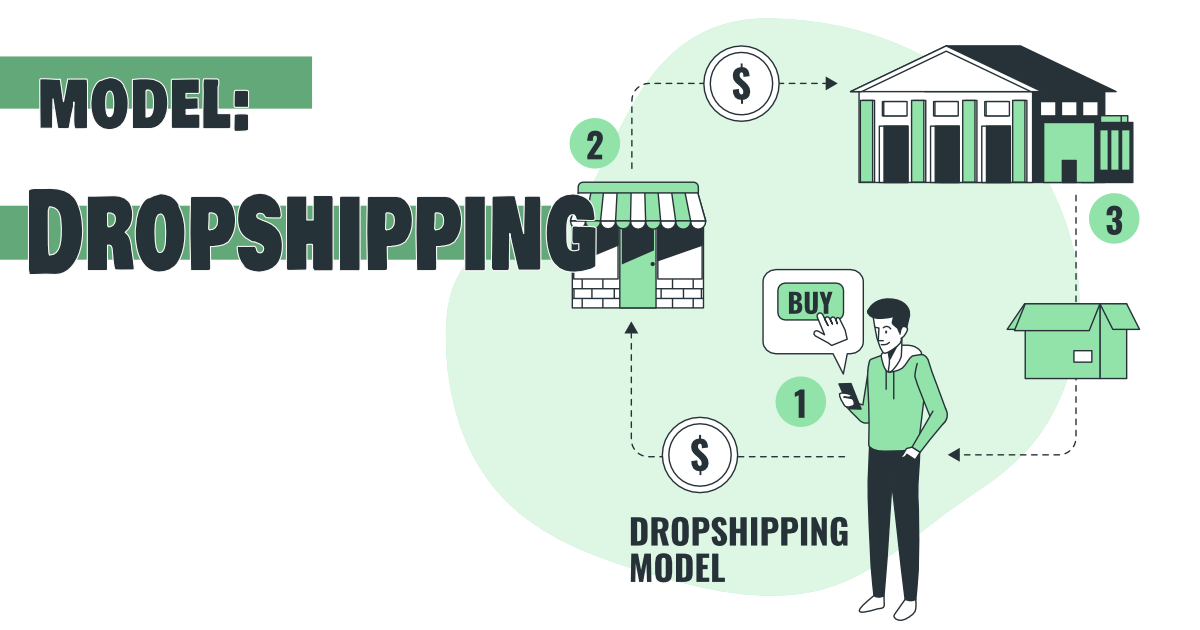Understanding your customer’s needs and pain points is crucial for creating a successful product. By identifying these key factors, you can create a product that not only meets but exceeds customer expectations, leading to increased customer satisfaction and ultimately, sales. In this article, we’ll explore the importance of identifying customer needs and pain points in the product development and innovation process.
Conducting market research
Market research is an essential step in the product development and innovation process. It allows you to gather information about your target market, including their needs and pain points, and use this information to create a product that meets their needs. Here are the steps to conducting effective market research:
- Define your research objectives: Before you begin, it’s important to have a clear understanding of what you hope to achieve through your research. This will help you focus your efforts and determine the types of data you need to collect.
- Identify your target market: Understanding your target market is critical for conducting effective market research. Identify who your target customer is and what their needs and pain points are.
- Choose your research method: There are several methods for conducting market research, including surveys, focus groups, and online research. Choose the method that best suits your research objectives and budget.
- Collect data: Once you have chosen your research method, it’s time to start collecting data. Make sure to use reliable sources and conduct your research in a systematic and organized manner.
- Analyze the data: Once you have collected your data, it’s time to analyze it. Look for patterns, trends, and insights that can help you better understand your target market and their needs and pain points.
- Use the results: Use the results of your market research to inform your product development and innovation efforts. Incorporate the insights you’ve gained into your product design and marketing strategy to ensure that you’re meeting your customers’ needs.
In conclusion, conducting market research is an essential step in the product development and innovation process. By understanding your customers’ needs and pain points, you can create a product that meets their needs and exceeds their expectations.
Gathering customer feedback
Gathering customer feedback is a critical step in the product development and innovation process. It provides valuable insight into what customers like and dislike about your product and what they would like to see improved. Here’s a step-by-step guide to gathering customer feedback:
Why Gathering Customer Feedback is Important
- Customer feedback is essential for enhancing product development and innovation. It provides valuable insight into what customers like and dislike about your product, what they would like to see improved, and what features they find most important.
How to Gather Customer Feedback
- Choose the right feedback channels: There are several channels for gathering customer feedback, including surveys, focus groups, customer service interactions, and online reviews. Choose the channels that best suit your target market and research objectives.
- Make it easy for customers to provide feedback: Make sure that your feedback channels are easy to access and use. Provide clear instructions and make it simple for customers to provide their feedback.
- Encourage customers to provide feedback: Encourage customers to provide feedback by offering incentives, such as discounts or special offers. Make sure to thank customers for their feedback and let them know how you are using their feedback to improve your product.
- Analyze the feedback: Once you have collected your customer feedback, it’s time to analyze it. Look for patterns, trends, and insights that can help you better understand your customers’ needs and pain points.
- Use the feedback to enhance your product: Use the insights you’ve gained from customer feedback to inform your product development and innovation efforts. Incorporate the feedback into your product design and marketing strategy to ensure that you’re meeting your customers’ needs.
Best Practices for Gathering Customer Feedback
- Be open and transparent with customers about how you’re using their feedback.
- Respond to customer feedback in a timely manner and let them know how you’re using their feedback to improve your product.
- Continuously gather and analyze customer feedback to ensure that you’re meeting their needs and staying ahead of the competition.
Relevant Real-Life Example
- A company that sells hiking gear conducts regular customer surveys to gather feedback on their products. They use the feedback to improve their product design, add new features, and enhance their marketing strategy to better target their customers’ needs.
Actionable Tips
- Provide multiple feedback channels to make it easy for customers to provide their feedback.
- Offer incentives to encourage customers to provide feedback.
- Continuously gather and analyze customer feedback to ensure that you’re meeting their needs and staying ahead of the competition.
In conclusion, gathering customer feedback is a critical step in the product development and innovation process. It provides valuable insight into what customers like and dislike about your product and what they would like to see improved. By incorporating customer feedback into your product design and marketing strategy, you can ensure that you’re meeting your customers’ needs and staying ahead of the competition.
Identifying industry trends and opportunities
Identifying industry trends and opportunities is an important step in product development and innovation. It helps you stay ahead of the competition and identify new market opportunities. Here’s a step-by-step guide to identifying industry trends and opportunities:
Why Identifying Industry Trends and Opportunities is Important
- Industry trends and opportunities help inform product development and innovation by giving you insight into what customers are looking for and what the market is demanding.
- Staying ahead of industry trends and identifying new market opportunities can give you a competitive advantage and help you stay relevant in your market.
How to Identify Industry Trends and Opportunities
- Conduct market research: Conduct market research to gather data on your industry and identify trends and opportunities. This can be done through surveys, focus groups, industry reports, and other sources.
- Monitor your competitors: Keep an eye on what your competitors are doing and what new products or services they are launching. This can give you insight into industry trends and new market opportunities.
- Attend industry events: Attending industry events, such as conferences and trade shows, can provide you with valuable insight into industry trends and new market opportunities.
- Stay up-to-date with industry news: Stay informed about industry news by reading industry publications, following industry leaders on social media, and subscribing to industry newsletters.
- Analyze the data: Once you’ve gathered the data, analyze it to identify industry trends and new market opportunities. Look for patterns, trends, and insights that can help inform your product development and innovation efforts.
Best Practices for Identifying Industry Trends and Opportunities
- Stay informed about industry news and attend industry events to stay up-to-date on industry trends and new market opportunities.
- Monitor your competitors to stay ahead of the competition and identify new market opportunities.
- Continuously conduct market research and analyze the data to ensure that you’re staying informed about industry trends and new market opportunities.
Relevant Real-Life Example
- A company that sells fitness equipment regularly attends fitness industry events and monitors its competitors to stay informed about industry trends and new market opportunities. They use this information to inform their product development and innovation efforts, launching new products and services that meet the demands of the market.
Actionable Tips
- Attend industry events to stay informed about industry trends and new market opportunities.
- Monitor your competitors to stay ahead of the competition and identify new market opportunities.
- Continuously conduct market research and analyze the data to ensure that you’re staying informed about industry trends and new market opportunities.
In conclusion, identifying industry trends and opportunities is an important step in product development and innovation. It helps you stay ahead of the competition, identify new market opportunities, and inform your product development and innovation efforts. By continuously monitoring industry trends and conducting market research, you can stay informed and ahead of the competition in your market.
Analyzing competitors and their offerings
Analyzing competitors and their offerings involves evaluating the products, services, strategies, and market positioning of companies in the same industry as your business. This information helps you understand what your competitors are offering, how they are positioning themselves, and where there are opportunities for innovation.
Understanding your competitors is essential for product development and innovation. By analyzing your competitors, you can learn from their strengths and weaknesses, identify gaps in the market, and differentiate your offerings from theirs. This information can also help you make strategic decisions about pricing, product features, and marketing.
How to analyze competitors and their offerings
- Identify your competitors: Start by identifying the companies in your industry that offer similar products or services as your business.
- Gather information: Research the competitors online and gather information about their products, services, pricing, target market, marketing strategies, and customer feedback.
- Evaluate their offerings: Analyze the competitors’ offerings, including their strengths and weaknesses, and compare them to your own products or services.
- Identify gaps in the market: Look for opportunities to fill any gaps in the market where your competitors are not meeting customer needs.
- Differentiate your offerings: Based on your analysis, determine how you can differentiate your offerings from those of your competitors to meet customer needs in new and unique ways.
Relevant Examples
- Apple Inc. is known for its thorough competitor analysis and is often seen as the industry leader in terms of innovation. By analyzing competitors such as Samsung and Huawei, Apple has been able to identify gaps in the market and differentiate its offerings, such as introducing the iPhone with a touch screen when competitors still offered phones with physical keyboards.
- Tesla Inc. entered the automotive industry and quickly became a leader by analyzing the strengths and weaknesses of competitors such as BMW, Mercedes, and Toyota. Tesla differentiated itself by offering electric vehicles with advanced features and a focus on sustainability, which was not offered by traditional automotive companies.
Real-Life Examples
- A small restaurant business can analyze competitors in the local area to determine what food items are in demand and what menu items are lacking. This information can help the restaurant differentiate its offerings and target its marketing efforts.
- A new software company can analyze competitors in its industry to determine the most in-demand features and pricing strategies. This information can inform product development and pricing decisions.
Best Practices
- Regularly update your competitor analysis: Regularly evaluate your competitors and update your analysis to stay informed about the latest developments in the industry.
- Look for innovation opportunities: Use your competitor analysis to identify opportunities for innovation, such as filling gaps in the market or offering unique features.
- Focus on the customer: Keep the customer at the center of your analysis and focus on understanding their needs and pain points, as well as how your competitors are meeting those needs.
Actionable Tips
- Use tools such as SEMrush, Alexa, and SimilarWeb to gather information about your competitors.
- Attend trade shows and events to observe your competitors in action and gather information about their offerings.
- Engage with customers to gather feedback on your competitors and their offerings.
In conclusion, analyzing competitors and their offerings is a crucial step in the product development and innovation process. By gathering information, evaluating their offerings, and looking for opportunities for differentiation, you can inform your product development and innovation efforts to stay ahead of the competition.
Identifying gaps in the market
To succeed in a competitive market, it’s important to understand where the opportunities lie and how to differentiate your offering from the existing solutions. Identifying gaps in the market is a crucial step in the product development and innovation process. It involves identifying the unmet needs of your target customers, the problems they face, and the areas where competitors are not meeting their expectations.
Identifying gaps in the market means finding areas where there is a demand for a solution or service that is not being met. This could be a need for a new product, a better quality of an existing product, or a unique solution to a problem.
By identifying gaps in the market, you can create a unique selling proposition for your product and offer something that is not available in the market. This will give you a competitive advantage and increase the chances of success.
To identify gaps in the market, you can follow these steps:
- Analyze the market and understand the needs of your target customers
- Study the products and services offered by your competitors
- Look for areas where the competition is lacking or not meeting the expectations of customers
- Gather customer feedback and understand their pain points and unmet needs
- Analyze industry trends and see if there are any new opportunities emerging
Relevant Examples
- Apple’s iPhone – The iPhone was launched in a market that already had several smartphone brands, but it offered a unique experience with its user-friendly interface, touch screen, and innovative features.
- Airbnb – Airbnb identified a gap in the market for short-term rentals and offered a unique solution for people looking for affordable and alternative accommodations.
Real-Life Examples
- Tesla – Tesla identified a gap in the electric vehicle market and created a premium electric car with long range capabilities and unique features.
- Slack – Slack identified a gap in the market for a better communication tool for teams and created a platform that revolutionized the way teams collaborate.
Best Practices
- Stay updated with industry trends and advancements
- Gather customer feedback regularly
- Conduct market research regularly to understand the market and its changes
- Collaborate with your team to identify new opportunities
Actionable Tips
- Look for areas where customers are facing problems with existing solutions
- Keep an open mind and be willing to challenge the status quo
- Ask your customers about their needs and pain points
- Network with other entrepreneurs and industry experts to learn about new opportunities
In conclusion, identifying gaps in the market is a crucial step in the product development and innovation process. By understanding the unmet needs of your target customers and the areas where competitors are not meeting their expectations, you can create a unique selling proposition for your product and increase your chances of success.
Prioritizing customer needs and pain points
Prioritizing customer needs and pain points is an essential part of the product development and innovation process. It helps you to better understand your target audience and focus on the areas that matter most to them. This way, you can ensure that your product not only meets but exceeds their expectations.
Prioritizing customer needs and pain points involves sorting through the data gathered from market research, feedback, and trend analysis to determine which areas are the most important to your target audience.
Focusing on the most important needs and pain points ensures that your product is not only relevant but also provides the most value to your customers. It also helps to increase customer satisfaction, reduce churn, and improve your overall reputation.
How to prioritize customer needs and pain points
- Start by compiling a list of all customer needs and pain points gathered from market research and feedback.
- Group similar needs and pain points together to get a clearer picture of the most common issues faced by your target audience.
- Assign a priority level to each need or pain point based on its frequency and severity, with the most pressing issues taking priority.
- Use the prioritized list to inform product development decisions, ensuring that the most important needs and pain points are addressed first.
Relevant Examples
A company that sells natural skincare products conducted market research and found that their customers were concerned about the use of harmful chemicals in skincare products. They used this information to prioritize developing a line of all-natural skincare products free from harmful chemicals.
Real-Life Example: Apple Inc. is known for its ability to prioritize customer needs and pain points in product development. For example, in response to customer feedback, they added a larger screen and a better camera to the iPhone to better meet customer needs and improve the overall user experience.
Best Practices
- Regularly gather and analyze customer feedback to stay informed of their changing needs and pain points.
- Use a combination of quantitative and qualitative methods to gather data and get a more complete picture of customer needs.
- Work with a cross-functional team to ensure that all perspectives are considered when prioritizing customer needs and pain points.
- Be willing to adjust your priorities based on new information and changing customer needs.
Actionable Tips
- Use online surveys and focus groups to gather feedback from customers.
- Utilize social media listening tools to monitor customer conversations and gather insights on their needs and pain points.
- Offer incentives for customers to provide feedback, such as discounts or exclusive offers.
- Regularly review and update your priority list to stay on top of changing customer needs.
In conclusion, prioritizing customer needs and pain points is a critical step in the product development and innovation process. By understanding and addressing the most pressing needs and pain points, you can ensure that your product is relevant, valuable, and well-received by your target audience.
Creating a product development plan
Creating a product development plan is an essential step in the product development process. The plan outlines the steps involved in developing and launching a new product, including customer needs and pain points, market research, competitive analysis, and product features.
What is a Product Development Plan?
A product development plan is a roadmap that outlines the steps and milestones involved in the development of a new product. It also outlines the resources, time frame, and budget required to bring the product to market.
Why Create a Product Development Plan?
A product development plan helps entrepreneurs and businesses stay focused on their product development goals and ensures that everyone involved in the process is on the same page. The plan provides a clear roadmap for the development of a new product, making it easier to stay organized and on track.
How to Create a Product Development Plan?
Here are the steps involved in creating a product development plan:
- Identify customer needs and pain points
- Conduct market research
- Analyze competitors and their offerings
- Identify gaps in the market
- Prioritize customer needs and pain points
- Determine product features and specifications
- Establish a timeline and budget
- Assign responsibilities to team members
Relevant Examples and Real-Life Examples
An example of a successful product development plan is the creation of the iPhone by Apple. Apple conducted extensive market research to identify customer needs and pain points, analyzed the competition, and prioritized customer needs in the development of the iPhone.
Another example is the development of the Tesla Model S electric car. Tesla conducted market research to determine customer needs, analyzed the competition, and identified gaps in the market. The company then prioritized customer needs and established a timeline and budget for the development of the Model S.
Best Practices
- Involve the entire team in the product development process
- Set realistic and achievable goals
- Regularly review and update the plan
- Communicate with stakeholders to ensure everyone is on the same page
- Continuously gather customer feedback and adjust the plan accordingly
Actionable Tips
- Focus on the customer – always keep the customer at the center of the product development process
- Collaborate with team members and stakeholders to get different perspectives and ideas
- Continuously gather feedback from customers and make adjustments to the product development plan accordingly
- Prioritize the development of high-value features that solve customer pain points
In conclusion, creating a product development plan is an essential step in the product development process. The plan helps entrepreneurs and businesses stay focused on their goals, stay organized, and ensure everyone involved is on the same page. By following best practices and continuously gathering customer feedback, businesses can ensure the success of their new product.
Product plan template
I. Introduction
- Brief overview of product development plan and purpose
II. Customer Segment
- Identify target customer segment(s) and their needs/pain points
- Analyze customer feedback, preferences and competitors’ offerings
III. Product Features
- Prioritize customer needs and pain points
- List product features that address these needs
- Identify unique selling points and differentiators
IV. Market Opportunities
- Analyze industry trends and opportunities
- Identify gaps in the market
- Evaluate potential target markets
V. Resource Allocation
- Determine required resources (human, financial, technology, etc.)
- Establish timeline and budget for product development
VI. Development & Launch
- Outline product development process, including prototyping and testing
- Define product launch strategy (timing, channels, marketing, etc.)
VII. Continuous Improvement
- Plan for post-launch monitoring and evaluation
- Outline strategy for ongoing product improvement
VIII. Conclusion
- Recap of key points and action items
IX. Resources
- Recommended books and articles for further reading on product development and innovation.
Note: This is just a sample product development plan, and the actual plan should be tailored to the specific needs and circumstances of the product and company.
Sample product plan for a tech startup
I. Introduction
A. Problem Statement: To develop a new app for booking and managing appointments for small businesses.
B. Goals and Objectives: To create an app that is user-friendly, reliable and helps small businesses increase efficiency and customer satisfaction.
II. Market Research
A. Competitor Analysis: Competitors include Booksy, Acuity Scheduling, and Setmore.
B. Customer Feedback: The customers preferred an app that is affordable, easy to use and has features like appointment reminders and payment processing.
III. Product Development
A. Features:
- User-friendly interface
- Affordable pricing
- Appointment scheduling and management
- Appointment reminders
- Payment processing
- Integration with popular calendar apps
- Customer management
IV. Target Market
A. Small businesses in the beauty and wellness industry, such as hair salons, spas, and gyms.
V. Budget and Timeline
A. Budget: $100,000
B. Timeline: 9 months
VI. Marketing and Sales
A. Marketing Strategy:
- Targeted online advertising
- Influencer partnerships
- Content marketing
- Community building through social media
B. Sales Strategy:
- Direct sales to small businesses
- Channel sales through industry associations and event sponsorships
VII. Development Team
A. App Development Team:
- Project Manager
- UI/UX Designer
- Backend Developer
- Frontend Developer
- QA Tester
B. Support Team:
- Customer Support Representative
- Technical Support Specialist
VIII. Launch and Post-Launch
A. Launch:
- Soft launch to selected businesses for feedback
- Full launch with targeted online advertising campaign
B. Post-Launch:
- Ongoing user testing and feedback
- Continuous updates and improvements
IX. Outline strategy for ongoing product improvement
A. Regularly gather and analyze customer feedback
B. Monitor industry trends and competitors
C. Continuously prioritize and implement new features
D. Dedicate a budget for ongoing development and improvement.
X. Conclusion
By following this product plan, the tech startup aims to develop an app that meets the needs of small businesses in the beauty and wellness industry, increases efficiency, and improves customer satisfaction.
Resources and References
- “The Lean Startup” by Eric Ries
- “The Mom Test” by Rob Fitzpatrick
- “Ask: The Counterintuitive Online Method to Discover Exactly What Your Customers Want” by Ryan Levesque
- “The Innovator’s Dilemma” by Clayton Christensen
- “Contagious: How to Build Word of Mouth in the Digital Age” by Jonah Berger
- “Crossing the Chasm” by Geoffrey Moore
- “Competing Against Luck: The Story of Innovation and Customer Choice” by Clayton Christensen
- “Blue Ocean Strategy: How to Create Uncontested Market Space and Make Competition Irrelevant“
- “Blue Ocean Strategy” by W. Chan Kim and Renée Mauborgne
- “Contagious: Why Things Catch On” by Jonah Berger
- “Inspired” by Marty Cagan
- “Running Lean” by Ash Maurya
- “Cracking the Innovation Code: How to Drive Disruptive Innovation” by Tim Kelly
- “Product Development: A Structured Approach to Consumer Product Development” by Anthony D. DiBenedetto and Michael J. Jaffe













